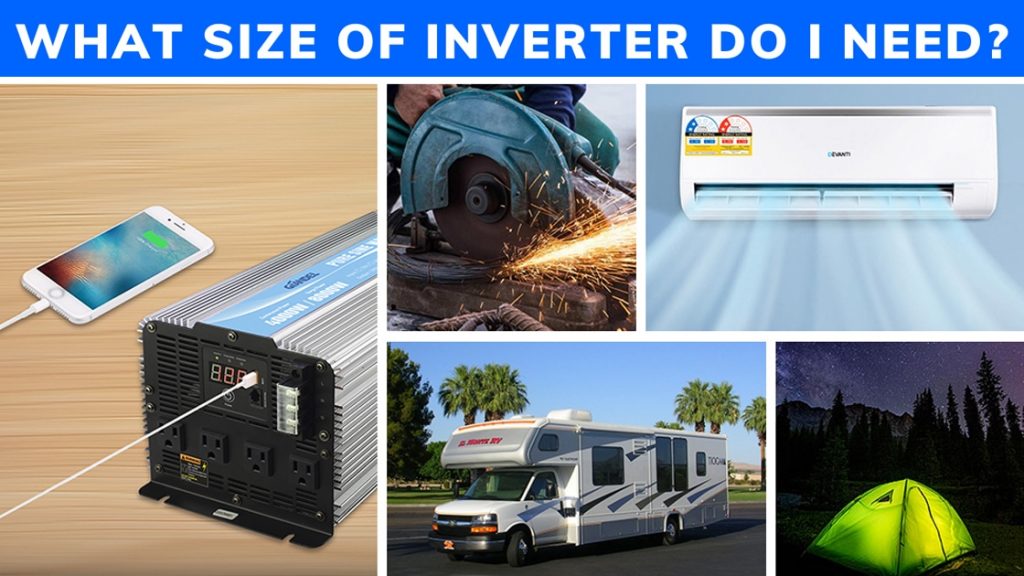You may need an inverter to power your household appliances from your car during outages, integrate it with your solar power system, or simply use it as a portable power source for your next camping trip.
Whatever the use, the power ratings are always the most important specification of an inverter.
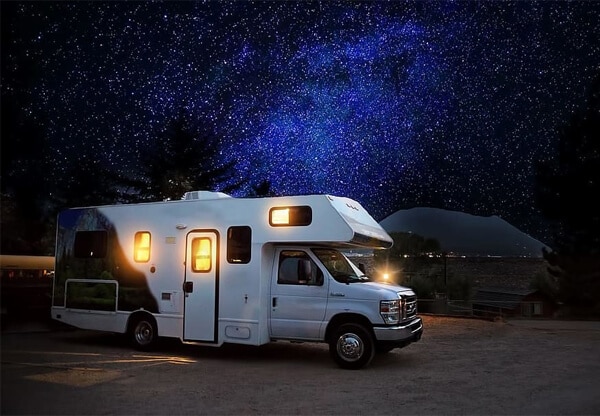
An inverter can come in handy during a camping trip
You might wonder:
- What size inverter do I need?
- What size inverter do I need for my house?
- Or what size power inverter do I need for a 700-watt microwave?
These are common questions to come to mind when selecting an inverter. And while it’s virtually impossible to pin down an exact number, there are certain ways to estimate the loads your inverter needs to produce. We’ll show you how below.
What Size Of Inverter Do I Need?
The Basics: Continuous Loads
The key to a good estimation of an inverter for your needs is knowing the devices and appliances you plan to power by it.
It’ll be very simple if you need to turn on just one of them at a time. But the calculation gets trickier as multiple appliances draw power out of your inverter simultaneously.
Generally, your inverter should be able to convert enough DC power into AC power (Watts or Amps) for your largest load. You can find these power consumption figures on the specification plate or label of the appliances. They’re continuous loads (or typical power) – the maximum amount of power these appliances can draw under normal conditions.
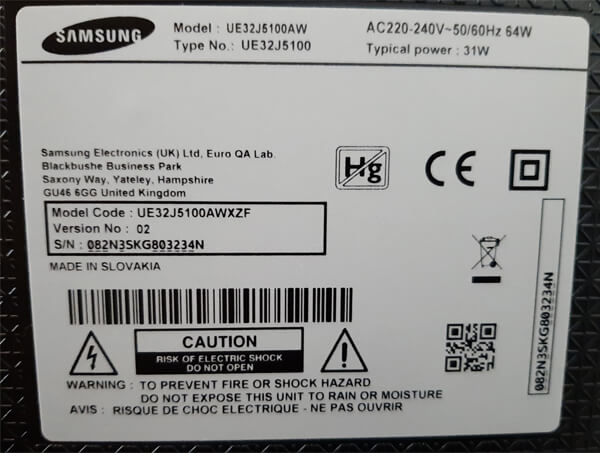
You can find the continuous load (or typical power) of an appliance on its label
Add up the Watts figures of all devices that will run off your inverter before leaving some wiggle room for safety (about 20%). The result at the end is the bare minimum power your inverter should provide.
For example, if you need to power a full PC setup with a power rating of 500W and a 30W LED light, aim for an inverter that can provide at least (500W + 30W) x 120% or 636W.
Peak/Surge Loads
The rule above is the principle of how you should determine the baseline size of a power inverter. But there is more to this, particularly when your electric devices don’t operate on the same level of power all the time.
For example, some of them may require a much higher power level to kickoff before running at a lower stable load. That’s why the ratings of an appliance may say, “continuous: 1,000 Watts, peak: 1,500 Watts”.
In addition to the usual running load, your inverter has to supply enough power for those brief surge moments as well. This consideration is critical when your inverter is required to run pumps, freezers, air conditioners, or any devices that may draw a surge of 2-6 times the continuous ratings when starting up.
To calculate approximate startup load, pay close attention to appliances that may need a high start-up surge, total up their peak powers, and add a safety margin of 20%. This sum is the surge rating required – a separate power rating of all inverters.
For instance, when your pump (with a 750W typical power and a 1,500W peak power) and air conditioner (1,000W typical power and 2,200W peak power) are plugged into the same inverter, it should have a continuous power rating and a peak power of at least 2,100W and 4,440W, respectively.
Here are how you can come up with those numbers:
- Continuous power: (700W + 1,000W) x 120% = 2,100W
- Peak power: (1,500W + 2,200W) x 120% = 4,440W
If you can’t find the peak power consumption on an appliance, double its typical power and use the result as the minimum continuous load your inverter should be able to support.
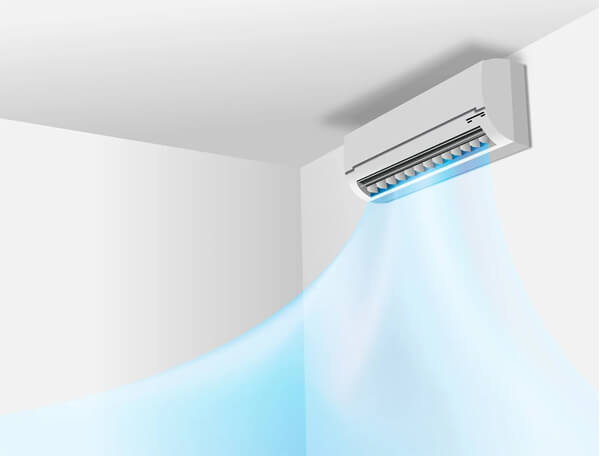
Appliances like air conditioners may draw extra power when turned on
Suggested Inverter Ratings For Common Appliances
This table provides you with a rough idea of which capacity your inverter should have for some common appliances (with peak loads taken into account).
| Appliances | Minimum Inverter Watts |
| What size generator do I need for an oxygen concentrator? | 300-1,500 |
| What size inverter do I need to run a laptop? | 300-400 |
| What size inverter do I need to run a fridge? | 2,000 |
| What size inverter do I need to run a TV and DVD player? | 600 |
| What size inverter do I need to run a microwave? | 1,500-2,000 |
| What size inverter do I need to run a Keurig? | 1,500 |
| What size inverter do I need to run a mini-fridge? | 1,000 |
| What size inverter do I need to run an air conditioner? (up to 10000 BTU) | 5,000 |
| What size power inverter do I need to run an air compressor? (1 HP) | 5,000 |
| What size inverter do I need to run a coffee maker? | 1,500 |
| What size inverter to charge electric bikes? | 350 |
| What size power inverter do I need to run a CPAP machine? | 150-300 |
Related:
- What Is A Power Inverter? What Does An Inverter Do?
- Top 8 Best Power Inverters For Cars – Best Buying Guide
- Top 5 Best Power Inverters For Home – Ultimate Buying Guide
- Top 8 Best Power Inverter For Semi Truck Reviews – Buying Guide
Frequently Asked Questions
How Many Amps Does An Inverter Use?
You can divide the Watts ratings of an inverter by the input voltage to determine how many Amps it draws. For example, a 2,400-Watt inverter powered by 120 Volts needs a current of at least 2,400W/120V or 20A.
What Is The Range Of Inverter Efficiency?
Top-quality sine wave inverters usually have a 90-95% efficiency.
What Are Top Inverter Brands?
Xantrex, WindyNation, AIMS, PowerMax, and Krieger, among others.
What Size Inverter Do I Need For A 700 Watt Microwave?
The peak power demand of microwave ovens may be up to 2 times the rated continuous load printed on the label. So aim for about 1,500 Watts for your inverter.
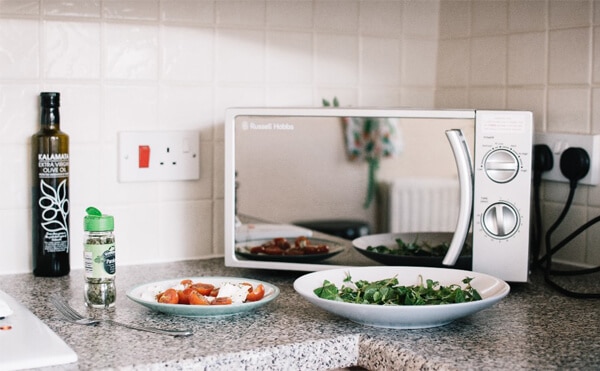
Microwave ovens need additional power to start
What Should An Oxygen Concentrator Be Set At?
Medium oxygen concentrators typically produce 5 liters of oxygen per minute and consume about 480W Watts.
What Size Inverter Do I Need To Run A 1500 Watt Heater?
Go for at least 3,000W to accommodate your heater.
What Size Inverter Do I Need For A 900 Watt Microwave?
The inverter size should be at least 1,800W.
What Size Inverter Generator Do I Need For My RV?
A 2,000W-3,000W portable inverter generator should be enough for basic activities. If you need to power more appliances, inverter generators of up to 7,000W are available.
What Size Inverter Do I Need For My Camper?
Mid-range power inverters between 2,000W and 3,000W are the most popular, but models with lower or higher power ratings are also available.
What Size Inverter Do I Need For My Home?
Depending on the number of appliances in your home, you may need an inverter of as little as 100W or as powerful as 5,000W.
What Size Inverter Do I Need To Run A 8000 BTU Air Conditioner?
An inverter with a 600 wattage rating should do the trick.
How Big Of An Inverter Generator Do I Need?
The answer boils down to what kinds of electric appliances you need to run. You can find small models with a rating between 2,000W and 3,500W, while some powerful inverter generators can produce high continuous load ratings (7,000W or more).
What Size Inverter Do I Need For Camping?
Anything between 150W and 6,000W, depending on your activities.
What Size Inverter Do I Need For Solar Panels?
For a rooftop photovoltaic system, the industry standard of the solar panels’ output and inverter ratio is 1.2 – a 4,000W inverter will work with a 4,800W photovoltaic panel array.
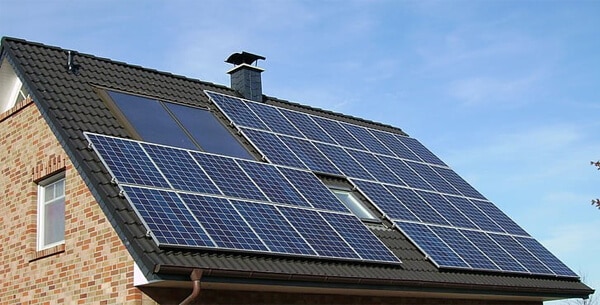
The power ratings of the inverter depend on the output of your solar panel system
How To Size Inverter And Batteries?
Use the power ratings of your appliances to estimate the required load your inverter should support following the above guide. This value can then be used to calculate the number and battery capacity needed to power the inverter.
What Kind Of Battery Should I Use On A Rooftop Solar System?
It’s recommended to equip a quality deep cycle battery for most home solar systems.
What Is Extra Deep Cycle Battery Voltage?
12V is the most popular voltage for deep cycle batteries.
Can I Use A Deep Cycle Battery As A Starting Battery For An Inverter?
Generally, there should be no problems.
How Much Power From An Inverter Do I Need For Laptop Computers?
Around 300-400W – the same AC power requirement for the power supply of most laptops.
How To Charge Drill Batteries With An Inverter?
Use the included battery charger that comes with your cordless drill to recharge it.
How To Run A Nespresso Machine With An Inverter?
The power consumption of Nespresso coffee makers is between 1,000W and 1,700W. A proper inverter should be able to support them.
What Size Oxygen Concentrator Do I Need So It Can Run From An Inverter?
Models with a lower flow rate can need a wattage rating up to 120W, but oxygen concentrators producing up to 10 liters per minute can consume 600W. They can all be used with a compatible inverter.
What Size Inverter Do I Need For A 100 Watt Solar Panel?
About 83 Watts (with a standard DC-to-AC ratio of 1.2).
What Size Grid Tie Inverter Do I Need?
There is no single value for this type of solar inverter. A small home solar system may need only a 300W micro-inverter, but industrial three-phase grid-tie power inverters can be rated up to 20kW.
Modified Sine Wave Vs. Pure Sine Wave Inverters – Which Should I Use In My Grid Tie Solar System?
Invest in a pure sine wave inverter. It’s preferable to connecting modified sine wave inverters to the grid.
Conclusion
So, what size of inverter do I need? It depends on the total power consumption of the specific appliances you’re going to hook up to your inverter.
But always keep in mind that electric devices tend not to draw the same power level all the time. It’s always better if you consider peak loads and leave some wiggle room for safety purposes.
